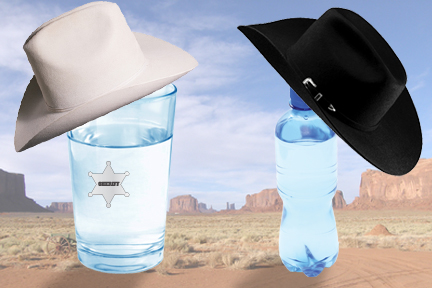Is Nestlé’s Pure Life Brand a Threat to Public Water?
In 2008, bottled water sales in the United States experienced a decline — one that lasted for two consecutive years. This was good news for water advocates, and bad news for the bottled water industry. Many believe this decline was due to a combination of a troubled economy and a growing consumer consciousness about bottled water’s negative environmental impacts. But, while the entire industry reported losses, one bottled water brand stood alone with increased sales: Nestlé Waters’ Pure Life. But what allowed this brand to shine in an otherwise challenging marketplace for bottled water? Was it brilliant marketing, or does the Pure Life brand represent something more than just a bottled water product?

In 2008, bottled water sales in the United States experienced a decline — one that lasted for two consecutive years. This was good news for water advocates, and bad news for the bottled water industry. Many believe this decline was due to a combination of a troubled economy and a growing consumer consciousness about bottled water’s negative environmental impacts. But, while the entire industry reported losses, one bottled water brand stood alone with increased sales: Nestlé Waters’ Pure Life.
But what allowed this brand to shine in an otherwise challenging marketplace for bottled water? Was it brilliant marketing, or does the Pure Life brand represent something more than just a bottled water product?
In our new report, Hanging on for Pure Life, Food & Water Watch fixes a suspicious consumer eye on the Nestlé’s activities, analyzing the company’s strategic shift from regional brands of spring water to a national brand that uses less expensive municipal water in order maintain a competitive advantage in the industry.
Nestlé is currently operating plants in 37 countries and expanding its global sales in several developing ones, many of which include impoverished populations that don’t have access to safe drinking water. Since consumers in the U.S. and Europe are changing their minds about bottled water, Nestlé seems to be taking advantage of the international water crisis to position itself to sell its product at a premium elsewhere around the globe. That’s not marketing so much as profiteering.
Nestlé ‘s expansion strategy might be beneficial for the company, but it should be raising red flags for anyone who values water as a public resource and a human right.
We need long-term, sustainable solutions when it comes to drinking water. Here in the United States, we already have a functioning solution, but we need to invest in repairing and maintaining our water infrastructure so it can continue to serve us well. Because, when it comes right down to it, consumers already have access to clean drinking water so long as we provide dedicated funding to ensure our water infrastructure can deliver it to everyone.
Hanging on for Pure Life tells us a little bit about what Nestlé Waters is doing to keep itself ahead of the curve. Read the executive summary. Arm yourself with information. Because it’s critical for us to stay ahead of them, no matter how clever their marketing.
-Rich Bindell


